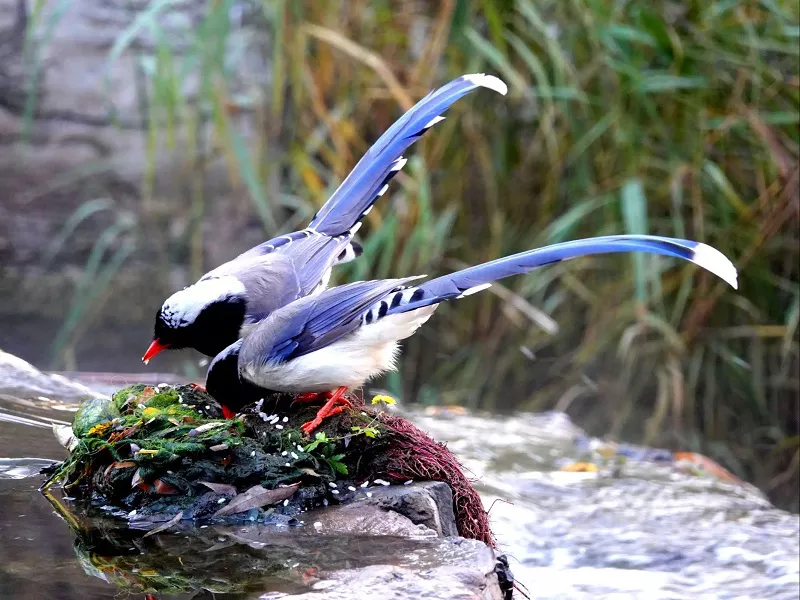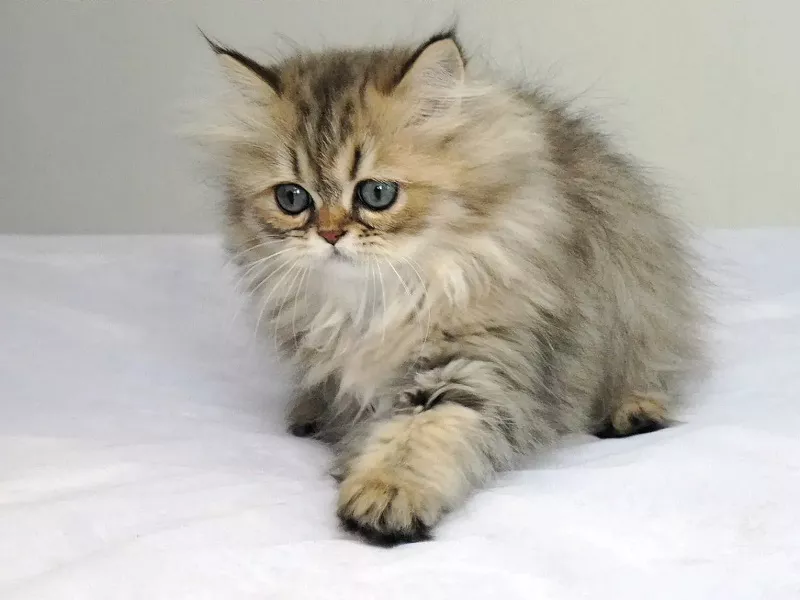What is a red billed blue magpie?
Red-billed blue magpie: It is a large crow with a body length of 54-65 cm. The mouth and feet are red, the head, neck, throat and chest are black, and there is a white to light blue-white or purple-gray patch on the top of the head to the back of the neck, and the rest of the upper body is purple-blue-gray or light blue-grey brown. The tail length is convex with black subterminal spots and white terminal spots. Underparts white. The yellow-billed blue magpie is very similar in appearance and feather color to this species, but the yellow-billed blue magpie has a yellow bill and only a white patch on the head. The difference is still obvious and not difficult to identify in the wild.
The red-billed blue magpie is known as the “happy blue bird” and can make a variety of noisy calls and whistles. Common and widespread in forest margins, thickets and even villages. Sexually noisy, small group activities. Feeds on fruits, small birds, eggs, and insects, often on the ground. Actively siege the raptor. It is distributed in the Himalayas, northeastern India, China, Myanmar and Indochina.
What does a red billed blue magpie look like?
The red-billed blue magpie is a beautiful bird with similar plumage in males and females. The forehead, the top of the head to the back of the neck, the side of the head, the side of the neck, the chin, the throat and the upper chest are all black, and the feathers from the top to the back of the neck have white, blue-white or purple-gray feathers, and the spots become more and more from the top of the head to the back. As it enlarges, a large plaque develops from the top of the head to the nape of the neck and sometimes even to the center of the upper back. The back, shoulders and waist are purple-blue-gray or gray-blue stained with brown, and the tail coverts are lavender-blue or light-blue-gray, with black terminal spots and white subterminal spots. The tail is long and convex. The central tail feathers are blue-gray with white terminal spots, and the rest of the tail feathers are purple-blue or blue-grey, with white terminal spots and black sub-terminal spots. The two wings are dark brown, the base of the outer feathers of the primary flight feathers is purplish-blue, and the ends are white. The lower body throat and chest are black, and the rest of the lower body is white, sometimes stained with blue or yellow. The iris is orange, and the mouth and feet are red.
Male and female birds are similar in plumage. The body is blue-purple on the back; the tail feathers are long, especially the two in the center.
Size measurement: body weight ♂150-200g, ♀147-210g; body length ♂510-634mm, ♀524-655mm; mouth peak ♂30-40mm, ♀31-37mm; wings ♂180-204mm , ♀175-208 mm; tail ♂350-454 mm, ♀370-474 mm; tarsal ♂40-49 mm, ♀40-47 mm. (Note: male—♂; female—♀)
Red-billed blue magpie habitat
It mainly inhabits various types of forests such as evergreen broad-leaved forests, coniferous forests, mixed coniferous and broad-leaved forests, and secondary forests in mountainous areas. The altitude ranges from the plains at the foot of the mountain, low hills to the plateau mountains of about 3500 meters.
Life habits of red-billed blue magpie
The red-billed blue magpie is gregarious, often in pairs or in small groups of 3-5 or more than 10. Lively and noisy, often jumping up and down between branches or flying between trees, mostly in a gliding posture when flying, sliding from hill to hill, from tree to tree, or from a tree to Another tree, jumping forward. When gliding, it stretches out its wings and spreads its tail feathers. Sometimes it flies with flapping wings after a while of gliding, especially when frightened, it often struggles to agitate its wings to flee up the mountain. The sound is sharp, like a “zha-zha-” sound.
The red-billed blue magpie is a close relative of the crow tribe, and has a diet compatible with meat and vegetables. It mainly eats animal foods such as insects, and also eats plant fruits, seeds, and crops such as corn and wheat, and has a mixed diet. Common species of animal food include click beetles, beetles, locusts, grasshoppers, flies, katydids, crickets, beetles, lepidopteran larvae and other insects, as well as spiders, snails, worms, fireflies, frogs, lizards, chicks, Bird eggs and other small invertebrates and vertebrates. Plant foods are mainly fruits and seeds of various trees and shrubs, and occasionally eat crops such as wheat and corn.
Sometimes it also aggressively invades the nests of other birds, attacking and eating young chicks and eggs. From March to May every year is the breeding season of the red-billed blue magpie. During this period, the parent bird is very strong in protecting the nest and has a very fierce temperament. .
Reproduction of red-billed blue magpie
Breeding period May-July. Nests on the side branches of trees and also in tall bamboo forests. The nest is bowl-shaped, mainly composed of dead branches, dry grass, fibrous roots, moss and other materials, 2-8 meters above the ground. The size of the nest is 17-24 cm in outer diameter, 10-17 cm in inner diameter, 8-14 cm in height and 4-7 cm in depth. Usually the outer layer is thick withered grass, rattan, thin roots and other materials, and the inner layer is lined with thin grass stems and fibrous roots. Each clutch lays 3-6 eggs, mostly 4-5 eggs. Eggs are oval, khaki, hazel or green-brown, with purple, reddish-brown or dark brown spots. The size of the eggs is 31-36 mm × 23-24 mm, the average is 32.7 mm × 23.5 mm, and the weight is 7-8 grams. The male and female parent birds take turns incubating the eggs, and the chicks are late maturing.

















